Fly Fishing with a Spinning Rod
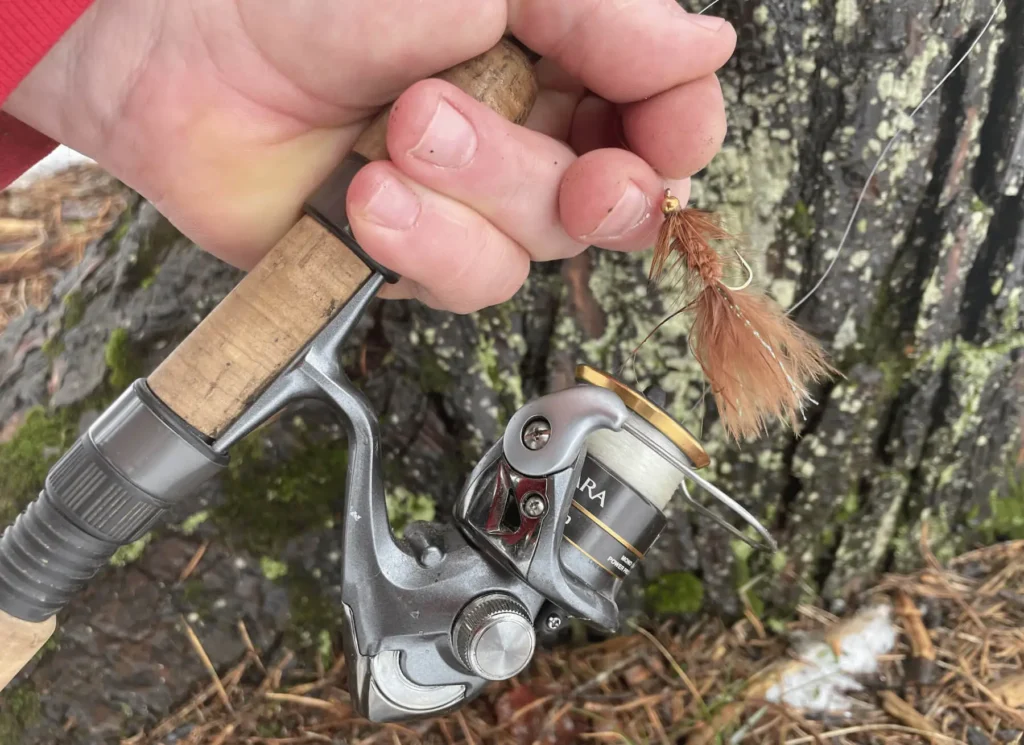
It seems blasphemous to use a fly with spinning gear, and maybe even a little hypocritical for the “serious” fly angler to consider. But in the right situation, fly fishing with a spinning rod can be downright effective.
My first experience fishing flies with spinning gear was almost 25 years ago, in my late teens, when I was just starting to transition over to fly gear only. Not wanting to carry both spinning and fly gear on the stream, I stuffed a box of Woolly Buggers in my vest just in case I wanted to try one. As it turned out, those Woolly Buggers saved the day. Fishing was painfully slow due to high and cold water, and I went through every type of lure and bait I had on me before finally tying on an olive Bugger. I added a split shot a few inches above the fly and danced it down through the current, and I literally caught fish after fish the rest of the morning.
Why was the technique so effective? I believe it was because fish were sluggish and holding tight to the bottom. They weren’t really feeding, but they would strike out of impulse. When I drifted bait through that same pool, trout would grab it but let it go without really chomping down on it. But with the fly, as soon as I felt them grab it, I set the hook. Unlike bait, I could strike as soon as I felt the bite rather than wait for them to take it into their mouths deeper.
It was an eye-opening experience, and even though I wasn’t using a fly rod, I was at least catching fish on flies. It was a great way to build confidence that I could consistently catch more trout on flies than on bait, and it was critical in the formation of many skills that I use today, even though I now use fly gear exclusively.
In truth, fly fishing with spinning gear is not much different than the popular Euro-style nymphing or tightlining techniques so common today, and it can be just as effective. Ultimately, learning how to fish flies with spinning gear just might help you become an even better fly fisherman. It can teach you foundational skills to build upon so that you can eventually leave the spinning gear at home and be confident knowing you’ll do just as well using traditional fly gear.
Spin Fishing Versus Fly Fishing
When you break it down to the basic fundamentals, spin fishing really isn’t much different than Euronymphing or tightlining. The goals are the same: maintain constant contact with the bottom while allowing your bait or fly to float as naturally as possible. These similarities are even more apparent when you look at the mono leaders used by many Euronymphers today. A 20-30-foot mono leader tapered down to around 3-4 pound test tippet is the rage in the world of Euronymphing. In fact, the leaders are so long that the fly line barely ever leaves the reel (which has caused many traditional fly fishers to argue whether Euronymphing is actually fly fishing at all, but that’s an argument for another day) except when you’re playing a large fish that takes a long run.
This is another similarity between fishing with spinning gear and Euronymphing – you need a heavier bait or fly in order to cast the line. With “traditional” fly fishing, the weight of the line is used to deliver the fly, but long monofilament leaders have no weight, so heavier flies are used to cast the fly. For that reason, it’s nearly impossible to fish with dry flies on a spinning rod, since they are virtually weightless, and fly fishing with a spinning rod is mainly reserved for nymphs and streamers.
However, in those cases that you want to fish a dry fly, there’s nothing wrong with changing out your spinning reel for a fly reel. You won’t be able to cast the fly line as far or as accurately with a spinning rod, but it will do in a pinch, particularly if you’re fishing smaller streams.
A good spin fisherman uses a line of approximately the same diameter and pound test as today’s Euronymphing mono rigs. And I say “good” here because there are many who still believe that 6 pound test monofilament is an acceptable trout rig. It’s not. When I was adamant about using spinning gear, I used 4 pound test on a 5 foot ultralight rod. The 4 pound test line is much more sensitive and, fished in conjunction with the ultralight rod, you can feel every tick of the bait or fly along the stream bottom. Eventually, I switched to a longer spinning rod with a softer action that could handle fishing even lighter 2-pound test line, and my catch rates went up exponentially. This is starting to sound more and more like Euronymphing, isn’t it?
This is a rig that will work just fine for fishing streamers and indicator rigs, too, but as with Euronymphing, longer, more sensitive rods have a distinct advantage. If you want to really up your game with spinning gear that will effectively fish flies as well, opt for a 7-7.5 foot fast action ultralight rod. And if you intend to drop down to 2-3 pound test line, an 8-8.5 foot medium action rod will serve you even better because the softer action will protect the smaller tippet and you’ll have fewer break offs. This concept applies to fishing with small flies and lighter tippets on traditional fly gear, too.
Please note: Before hitting the water with the intent of fishing flies on your spinning gear, be sure to check the regulations of the waters you plan to fish. Some special regulations sections, particularly those that are fly fishing only, state that all fishing must be done using conventional fly gear, including fly rod fly reel, fly lines, etc., and the use of spinning gear is prohibited, even if you’re using it to fish flies.
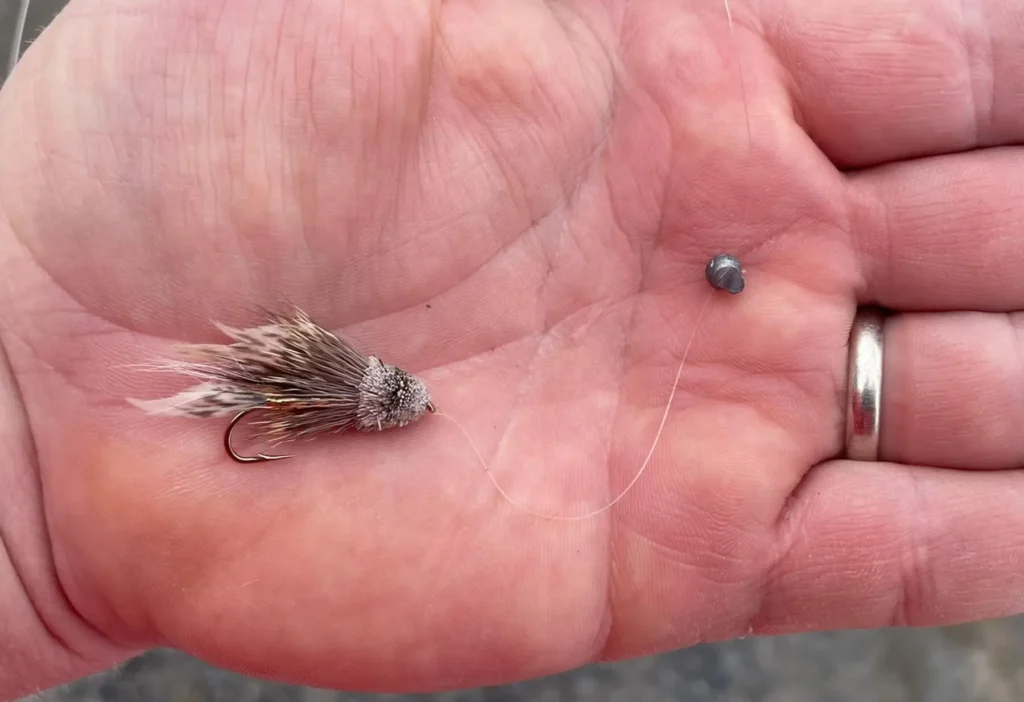
Advantages of Fishing Flies with Spinning Gear
The technique I described earlier when fishing the Woolly Buggers is a perfect example of a distinct advantage of using a spinning rod: line manipulation. It’s much easier to get the line (and fly!) to go where you want it to go with a spinning rod than it is with a fly rod. There’s less skill involved in casting a spinning rod, even when compared to the short-line technique often used when Euronymphing, and you can reach places with a spinning rod that are much harder (if not impossible) to reach with a fly rod.
Line manipulation, though, is one of the biggest keys to success when fly fishing, and starting out using flies on a spinning rod can set you on the path to learning this skill much quicker. Another advantage of fishing flies on a spinning rod is that it’s easier to get and maintain a tight line connection. You never lose contact with your fly.
If you’ve fished with spinning gear all your life and haven’t committed completely to fly gear, I’d recommend starting out with a Woolly Bugger on the end of your line and fish it in a similar fashion as described above. Oddly enough, that jigging technique is also no different than how many Euronymphers fish streamers. The main difference is that they’re typically using a heavily-weighted fly on a jig-style hook to achieve the action needed while maintaining contact with the bottom. A spin fisherman can accomplish this same technique by adding a small split shot a few inches above the fly, whether that fly is weighted or not, or they could simply use the same streamers common to Euronymphing.
Whatever streamer or nymph you use on spinning gear, you’ll probably have to add some weight above the fly. I generally add a small split shot about 3-4 inches above the fly, which helps get the fly down as well as simply cast the fly any distance. But remember, it doesn’t take long casts to catch fish. Focus on fishing with a short, tight line maintaining contact with the stream bottom. (You know…like Euronymphing – although, technically speaking, the addition of split shot makes it more like tightlining.)
Indicator rigs can also be fish with a spinning rod. After all, an indicator is really nothing more than a glorified bobber. Lately, the popular term for an indicator seems to be “floater,” but it’s the same thing, and nymphs are rigged the same way under the bobber…I mean, indicator…I mean, floater! The main advantage of fishing with an indicator is that you don’t need to add any shot above the fly because the indicator is often heavy enough to allow you to cast the fly. To learn more about fishing with indicator rigs, read this article – everything mentioned there also applies to fishing these rigs with a spinning rod.
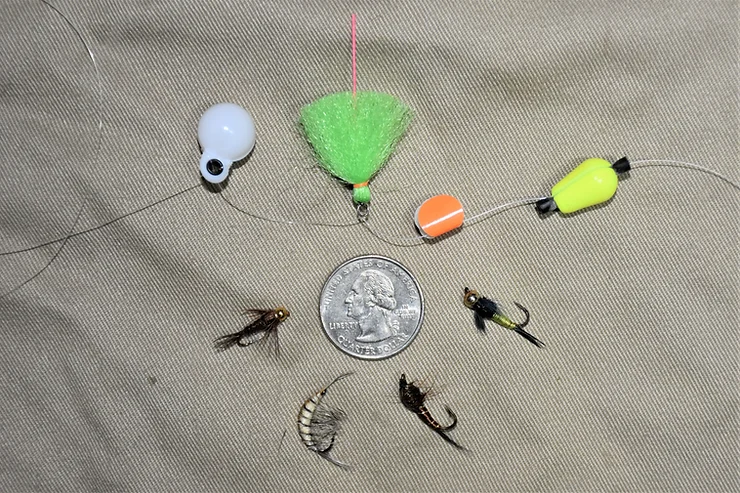
Here are a few of the products that I recommend for fly fishing with a spinning rod.
- Strike indicators: These allow you to detect strikes while achieving a drag-free drift. They also provide enough weight that makes it possible to cast a light nymph without adding split shot.
- Split shot. Most flies and monofilament lines are too light to cast, so you’ll need to add split shot in order to get any distance. Adjust weight so that you have just enough to get your flies where you want them to be but not so much that you get consistently get snagged. Ideally, the flies should ride drag-free along the bottom.
- Streamers. Beadhead Woolly Buggers are excellent flies to fish with a spinning rod. Crimp a small split shot 3-4 inches above the fly and cast quartering downstream. Retrieve at varying speeds, swing the fly, or cast up and drift it down through the current. There’s no wrong way to fish a bugger on a spinning rod!
- Tungsten nymphs. These are slightly heavier than regular brass bead nymphs and won’t require as much split shot to cast or get to the bottom, which will give you a more natural drift.
- Tippet rings. Tie these on the end of your monofilament fishing line and then attach a length of fluorocarbon tippet. The fluorocarbon tippet used in fly fishing is much more supple and typically lower diameter than the monofilament used on most spinning reels, which will give you a much better drift and more sensitivity for feeling strikes.
- Fly rod and reel combo. Eventually, once you realize the effectiveness and fun of catching fish on flies, you might want to start out with a low-cost fly rod and reel combo such as the Cortland Fairplay ($74.95 retail price) or Cortland Guide Guide Series ($189.95 retail price). Both are excellent introductory kits to get you started on your fly fishing journey!
How Fly Fishing with A Spinning Rod Can Make You A Better Fly Fisherman
One thing that fishing flies with a spinning rod taught me was how to fish streamers as if they were spinners. This became a favorite technique for several years, and it truly taught me how to effectively fish streamers once I started using fly gear exclusively. The reason most fly anglers don’t catch more on streamers is that they tend to fish them like flies. But if they fished them more like spinners, their catch rates would increase.
What does this mean? To me, fishing flies like spinners means working the angles. I’ve watched countless fly fishermen ply the waters with streamers in the traditional manner of casting across or angling downstream and swinging the fly or stripping it back to them. This is fine. It catches fish. But if they fished more quartering upstream, which involves much faster strips to keep ahead of the speed of the current, I think they’d see their catch rates go up. Mine certainly did once I started fishing streamers this way, and it’s something I learned from fishing them on a spinning rod simply because it’s an easier technique to master with a spinning rod.
Also, it’s important to vary the retrieve. Small pauses, letting the fly dip and dart, will induce more strikes than a simple crank retrieve at a steady speed. Adding a little life to your flies is a lot easier to learn how to do with a spinning rod, and it’s a skill that transitions well when you make the switch to primarily fly gear.
Another way to fish the fly like a spinner is to throw it into every nook and cranny along the stream. This is much easier to do with spinning gear, for the reasons mentioned above, but for some reason, many fly anglers avoid any place that looks like they might possibly lose a fly. I’ve watched some very good fly fishermen avoid juicy holding water because of a high snag potential in that pool, or because they didn’t think they could achieve the perfect drift with their nymphs.
But here’s something I learned from many years of fishing with both spinning and fly gear: it doesn’t always take a perfect drift to catch trout, and sometimes the biggest trout are sitting in the pools that are hardest to fish and have the most structure.
Also, and this one is huge: sometimes trout hit on impulse. When a trout is stationed in a hard-to-reach pool – under structure, for instance – and is in feeding mode, they’ll often ambush the first thing that hits the water. It doesn’t matter what it is, if it’s a spinner, some sort of bait, dry fly, nymph, or streamer, and they’ll often pounce before the presentation even gets down to the bottom.
There’s a percentage of fish that can be caught simply by throwing the fly (or lure or bait) in front of them and not worrying about drag-free drifts or any sort of logical presentation. Fishing with spinning gear taught me that because it’s so much easier to make a lot of casts in a lot of directions with spinning gear. It’s not as physically complicated as casting with a fly rod and doesn’t take as much effort – that’s one of the inherent advantages of fishing flies on a spinning rod, after all. But even if you’re committed to using exclusively fly rod and reel, if you can let go of worrying about getting into the perfect position and making the perfect presentation every single time, and instead just focus on getting the fly into a spot where a trout is likely to hold, I guarantee you’ll catch more fish.

Conclusion
The lives of most anglers follow a similar trajectory. They start out with spinning gear and eventually transition to fly rod and reel. The transition happens for many reasons – desire to learn a new skill, fly fishing is more challenging, or perhaps it’s just something that they always wanted to do. Regardless, many of the basic skills learned using a spinning rod directly apply to fishing with a fly rod. I look back fondly on the hundreds of days spent pounding the water with spinners or trying to figure out how I was going to earn enough money to pay my bait bill. Those were good days that no doubt made me a better fly fisherman.
Fishing flies on a spinning rod isn’t for everyone. Some will scoff at the idea, call it hypocritical. But consider this: as fishing methods evolve, it’s hard to deny that fishing with a spinning rod can teach you skills that directly translate to fly fishing. In fact, it seems that many types of fly fishing, such as Euronymphing, have become even more like spin fishing, to the point that we often see debates on social media about whether Euronymphing is actually fly fishing. It’s all a bunch of baloney, if you ask me.
The point of fishing, always, is to enjoy time on the water. And if you’re interested in fly fishing but don’t want to make the leap to fishing exclusively with fly gear, then fishing with flies on a spinning rod is a great place to start. It helps you build confidence in certain patterns while teaching you valuable skills about how to fish them effectively when you finally decide to transition over to using nothing but fly rod and reel. Ultimately, these skills will help make you a better fly fisherman, too.
Did You Find This Article Helpful?
Stay up to date with the Dark Skies Fly Fishing monthly newsletter for free and receive the latest posts in fly fishing news, tricks, tips, and techniques, stream reports, as well as updates on new flies added to the Online Store and exclusive discounts!
Sign Up Now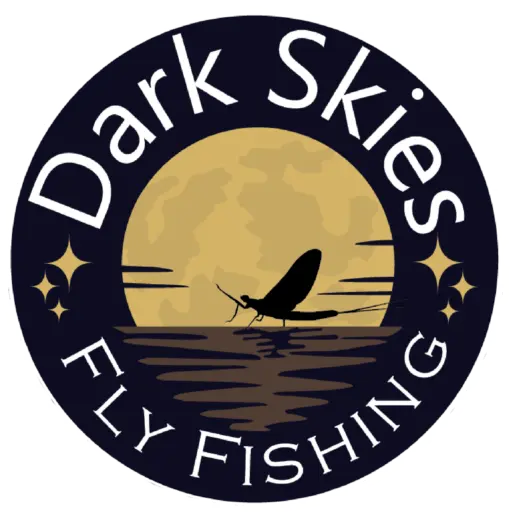
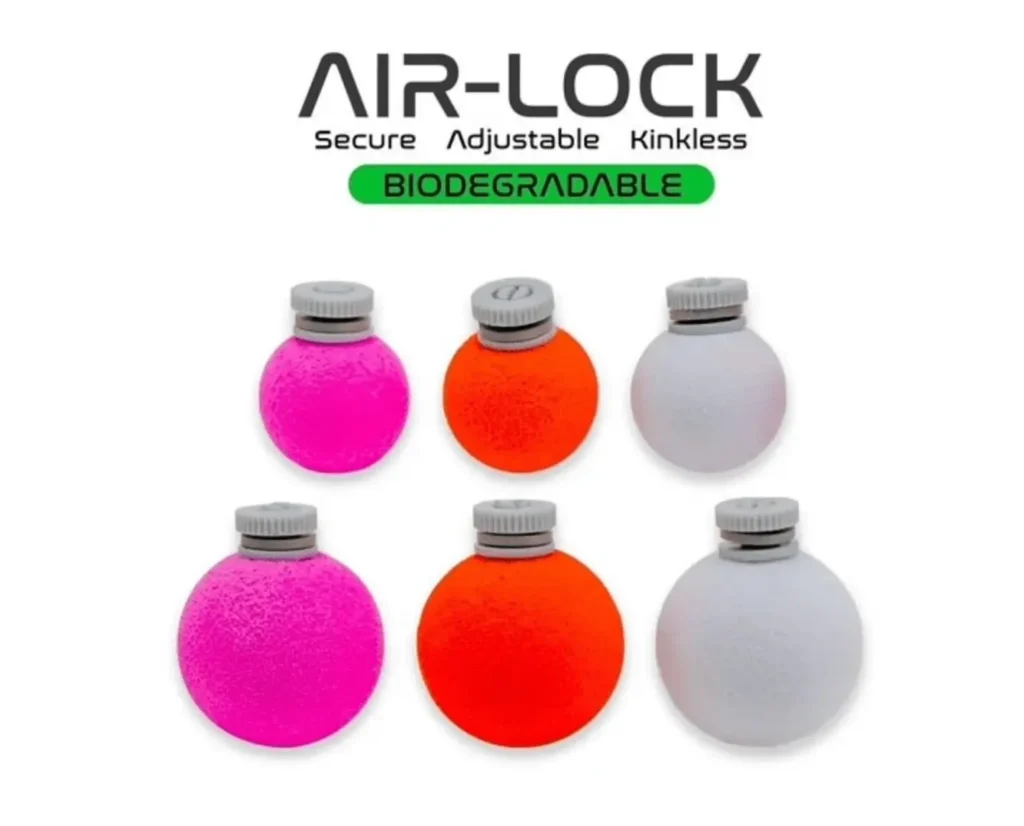
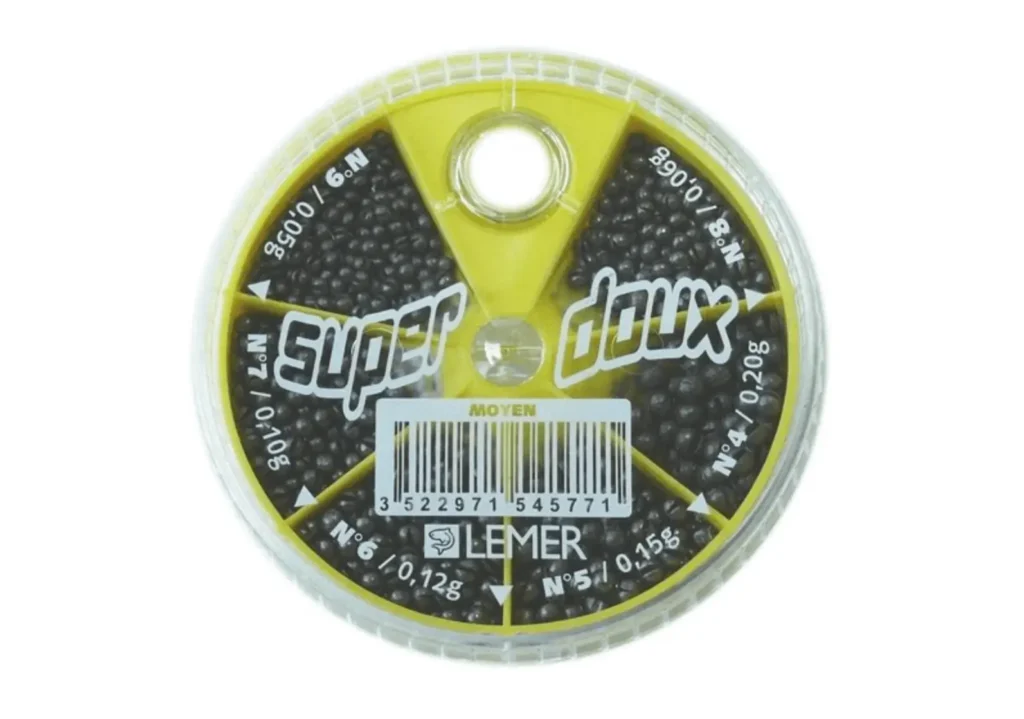
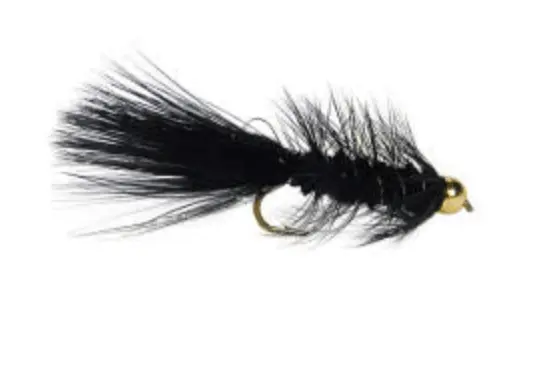
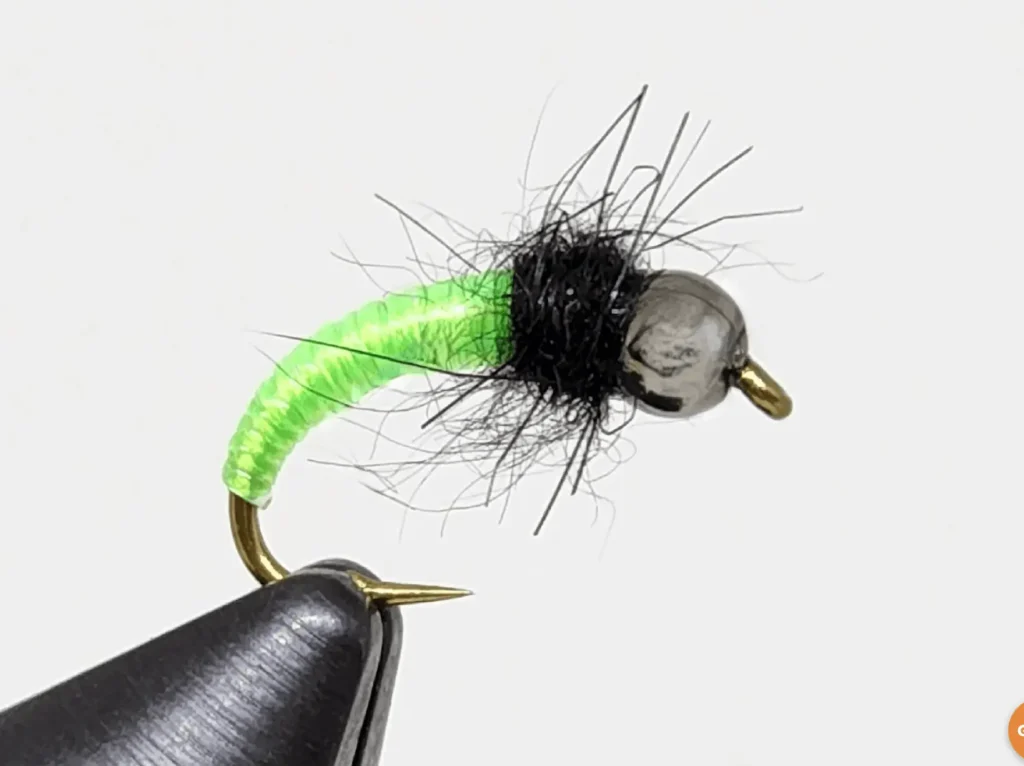
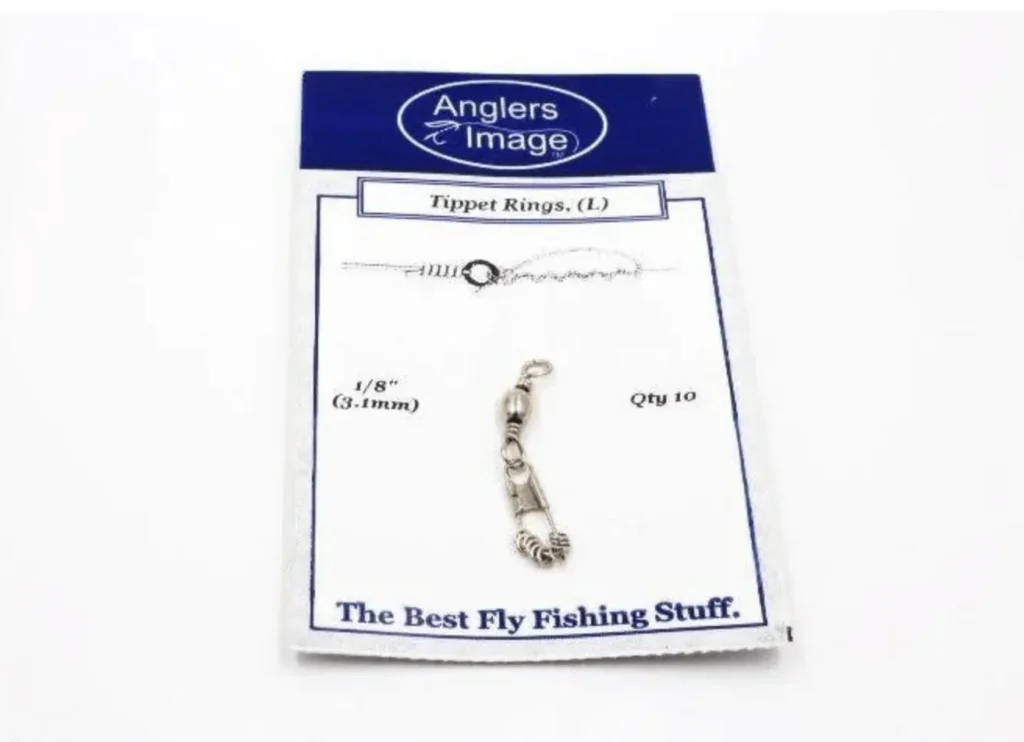
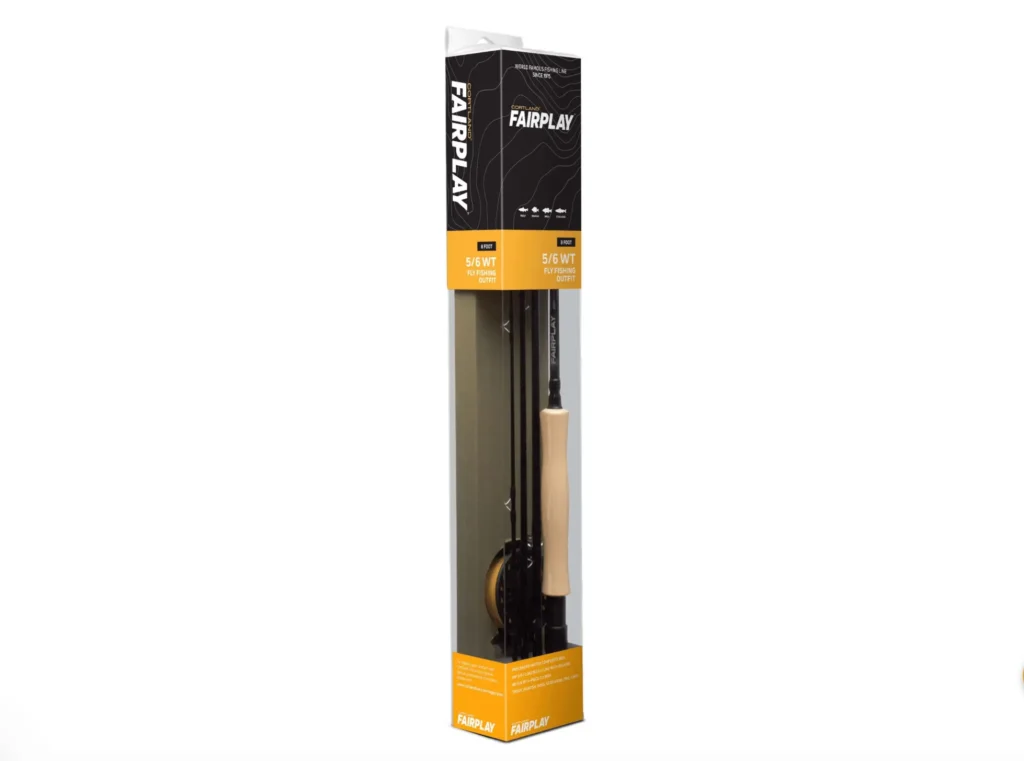
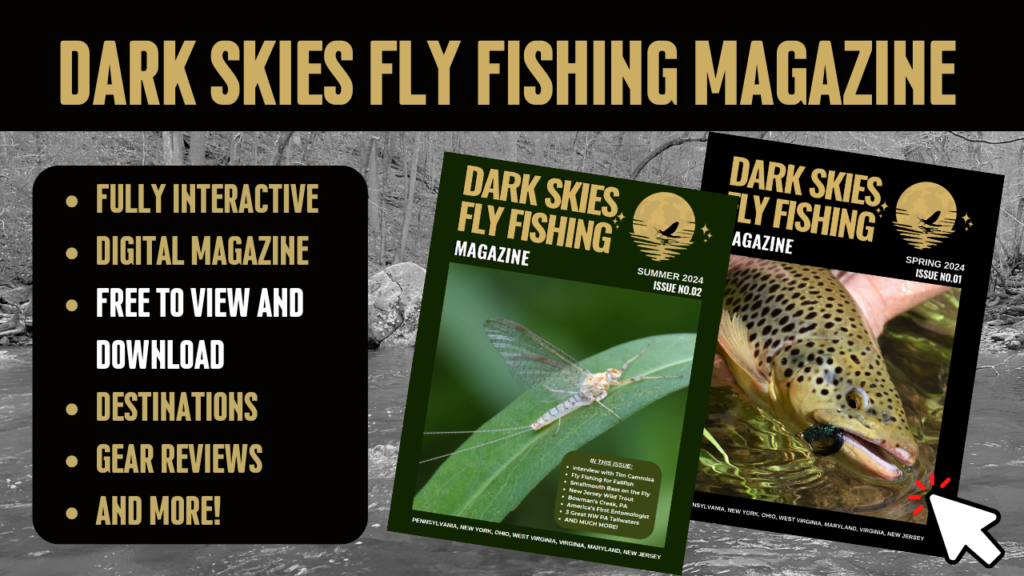
I enjoyed the article, brought back memories of spin fishing on slippery rock creek 38 years ago not catching anything. We met an older gentleman and his wife that had a cabin on the creek they were sitting on their porch having cocktails , asked how we were doing with catching trout . He recommended trying wooly buggers and streamers, we had neither so he loned us several streamers.along with telling us how to fish them .we caught trout right after they hit the water . I learned to fly fish afterwards from going to a school on slate run 3 day session, really enjoyed my time . I enjoy reading your news letters and your you tube videos .Thanks!!
Thank you so much for taking the time to read the article and drop a comment. I really appreciate your feedback. I loved those days of fishing flies on a spinning rod. It was a great way to learn new techniques, and like you, I was often amazed at how often trout smacked it as soon as it hit the water. Sometimes I think we get caught up in the complexity of fly fishing that we forget how simple it can be — cast the fly, trout hits the fly, catch the trout. Sometimes it truly is that simple!
That’s how started euro nymphing…did it for yrs wit a spinning rod and a sliding sinker jus achieved the dead drift …wanted to try fishing nymphs wit euro nymphing just that there’s a learning curve but fun .
I agree. There are many spin fishing skills that translate very well to fly fishing, and especially to Euro nymphing. Thank you for taking the time to comment!
Ralph
That’s a PA man there. Started my son at age 7 Fly fishing,he’s 13 now. Seen guy laugh when they seen the little guy in his hip boot. I got tons of laughs when those guys in their Simms waders and fish pond nets get out fished time and time again. Now they give him flies and marvel how he catches trout. He a legend around here and not a soul can touch this kid. I taught him everything I know and I can’t either. To your point, he throws a few Fly boxes in his vest when he spins fishes. He love’s going after the wild brows too. He will be in a book one day!! His passion for FF is unbelievable.
That’s awesome! It’s also a testament to the fact that it doesn’t take expensive gear to catch fish. Thank you for your comment.
Ralph
Is fishing with a Mepps type spinner that has a hair skirt fly fishing? Or, is casting a bucktail jig fly fishing? All too often I see these lure types used in “fly fishing only” waters cast with spinning rods. What is the definition of fly fishing–is it what is being presented to the fish or how it is presented? I would argue that fly fishing is a fishing technique where the weight of the line is the motive force in the cast whereas in conventional fishing the lure itself is what draws the line off the reel. In unrestricted waters this distinction is of little consequence, but it is significant in waters where conservation of the quarry and sportsmanship is important. Many countries and some places in the U.S. codify this definition, but many do not. In my mind fly fishing is a technique using specialized equipment and is not merely using lures with hair, feathers, or plastic.
I agree with your assessment of what fly fishing is. Nowadays, though, with the popularization of Euro nymphing, it seems the boundaries have been somewhat blurred, so it’s getting harder to define. For instance, Euro nymphing uses a fly rod to cast a long mono leader. So it’s not necessarily using the weight of the line as the motive force…but it’s still fly fishing (although that’s up for debate by many folks, lol).
However, there’s no doubt that using a Mepps types spinner with a hair skirt is not fly fishing. Could you fish a Mepps on a fly rod? Maybe. But I’m pretty sure anyone would agree that’s still not fly fishing. In no way could a Mepps be considered a fly.
Personally, I like the definition of fly fishing as presented on the posters found along the Fly Fishing Only sections you referenced, which is as follows:
(b) It is unlawful to fish in waters designated and posted as catch and release fly-fishing only except in compliance with the following requirements:
(1) Fishing may be done with artificial flies and streamers constructed of natural or synthetic materials so long as all flies are constructed in a normal fashion with components wound on or about the hook or hooks. Use or possession of any other lures or substances is prohibited.
(2) Fishing shall be done with tackle which is limited to fly rods, fly reels and fly line with leader material or monofilament line attached. Spinning, spincast and casting rods and reels are prohibited. (Source: https://www.law.cornell.edu/regulations/pennsylvania/58-Pa-Code-SS-65-14#:~:text=Use%20or%20possession%20of%20any,killed%20or%20had%20in%20possession.)
So according to this definition, although you CAN fish flies using a spinning rod, you CANNOT do so in an area designated as Fly Fishing Only. In those areas, fishing must be done with fly rod, fly reel, and fly line with the appropriate leaders. Incidentally, at one time this law also included limitations to the length of leader (18 foot or less) that could be used, which would make many of the 20-30-foot mono leaders used in Euro nymphing illegal today. That law was dropped from the PA Fishing Summary Book several years ago.
To your point, it matters little in waters with general fishing regulations, but anglers should always check before heading out to streams or stream sections managed under different regulations.
Thank you for reading and for taking the time to comment!
Ralph
So I tried drifting with a similar setup after reading your article, and lets just say its amazing. My primary setup is a 7’6″ Ultralight with a fast action and I pair that with a Daiwa 1000 reel. The local rivers here are loaded with smallmouth and trout of all kind. Ive typically always used 6lb braid to a 4x fly tippet leader. Usually in copolymer and have favored either inline spinners or drifting salmon eggs or a night crawler especially for trout. After reading your article i thought what the heck. Why not. I spooled up with some 2lb mono and used a variation on a double jig rig. I took a dry fly, tied it on with a longer tag end and at the end of the tag end @ 12″ I tied on a 1/32oz marabou jig. Taking your advice and what I had tied up, this setup led to my pb rainbow trout. She came in at 24.5″ and weighed 5.8lbs. Yes on 2lb mono. My reel has the back reel switch and from the time i was young i was taught by my grandfather to use it and boy has it paid off. I love this article and have shown it to all of my friends and even my younger brother has tried and had success with youre advice. Thank you so much.
That’s awesome! So glad to hear these techniques worked well for you and produced an awesome rainbow trout. Like you, I grew up using that back reel switch all the time! That’s definitely the key to landing big fish on light tackle. Reel drags can be sticky, and sometimes even the tension of the line being peeled off can be enough to cause the line to break when you’re using only 2lb test.
Congrats, Tyler. And thank you for sharing this post and website with all your friends!
Ralph